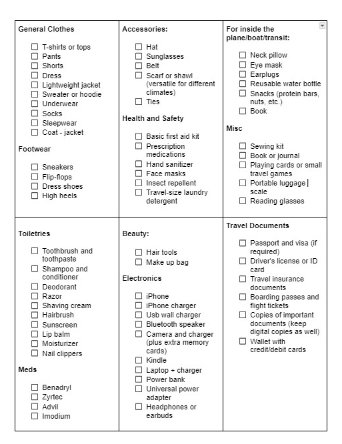This article may contain affiliate links. When you purchase something we recommend, we make a small commission. You don’t pay anything extra. 💘 For more details, check out our Terms of Use page.
Table of Contents
ToggleTravel and Digital Nomad Resources
How much should I bring when I travel?
The answer is usually as little as possible.
While every one of us will develop our style and preferences when it comes to traveling, it doesn’t hurt to know what others are doing. Maybe there is a missing hack somewhere or a simpler way to go about it.
My packing list looks a lot different now than 10 years ago when I was backpacking around New Zealand. As I’ve grown, my gear, equipment, and requirements have also changed.
Hobbies, lifestyle, and preferences will also affect what goes into your list. Are you a family? Do you have a newborn? Traveling with pets? Do you prefer hiking or dressing up for nights on the town?
These days I travel a lot as a tour leader, for weeks at a time, so my travel gear has shifted to more versatile pieces that look good.
How this packing list is structured
When it comes to packing lists, I find inspiration rather than guidance is the ultimate goal. After all, if I knew I needed a new laptop bag, I would simply search for “best laptop bags to buy”.
For that reason, I have included a packing list template as a general guideline and a list of travel gear and equipment that I like and can provide ideas for your list.
*The only exception here is travel to places that require specialized equipment. For example, if you are planning an intense hiking trip, or a cruise to Antarctica, exact guidelines are required and need to be kept.
Don't reinvent the wheel
Start with a generic packing list (that you can customize to your needs) and print it a few days or weeks before you need to start packing.
This way the bulk of the mental load is already done for you.
Here is what I’ve discovered. When we pack, we go through the motions. We make our toiletry bag, our clothes, underwear, accessories, and gear bag… easy. You don’t need a list to tell you that you need to pack toothpaste and toothbrushes or to decide on the number of t-shirts.
In other words, you don’t need to know what goes in.. but a way to check that it is indeed in.
That’s why a printed version works best.
Click the link below to make a copy of this list. Then go ahead and write down the categories you prefer and need. Cross out anything that is not relevant to your trip and keep the rest.
The Must-Have Items for Digital Nomads or Long Term Travelers
When I get ready to start packing, my one thought is “What will I not function without?”.
Thankfully, this list is quite small, and I have summed it up nicely here:
- Laptop and Charger
- Power Bank – and Adaptor
- Keyboard and Mouse
- Headphones
- External Hard Drive
- Smartphone
- Wallet and cards
- Passport
If my bag was stolen and I only had these items, I could still survive, work, and plan my next move.
Everything else on the list is nice to have, unless this is a hiking trip in which case, there are some more survival items required.
The only other category that you should put extra care in is medical.
For example, in Greece and some countries in Europe we have access to certain medications over the counter, but they are prescription-only in other places. This becomes easier the longer you travel, as you figure out that common items back home are harder to find in other places.
Packing List vs Gear List
Having the right gear when you travel can make a journey much smoother and more comfortable. This, to me, is the difference between a packing list and a travel gear list. A packing list covers all the essentials you need to bring, while a travel gear list provides specific recommendations on gear that makes your life easier and more comfortable on the road.
My favorite minimalist travel gear
I don’t mention items that I am not a die hard supporter of. For example, while I’ve used many different backpacks and luggage, I haven’t found the one.
Electronics

Kindle Paperwhite
I love the smell of books. I love holding a copy of actual books. But I can't bring them all with me. So it makes total sense to have a Kindle.
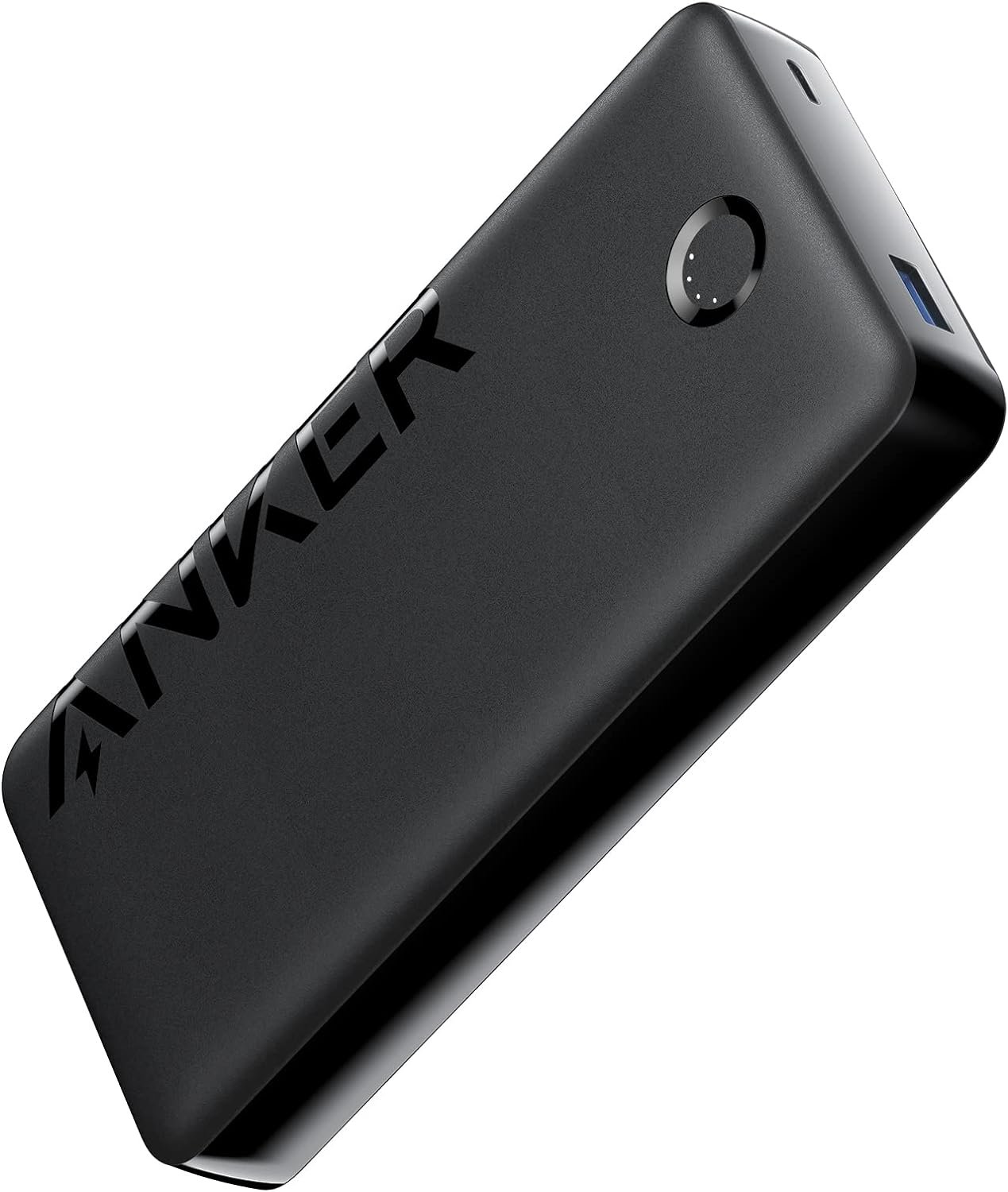
Anker Portable Charger
I'm a huge Anker fan. This portable charger from Anker, is Apple approved, reasonably priced and offers huge capacity to power your devices many times over. My first one lasted for a bit over 2 years, probably due to misuse and was an easy rebuy.
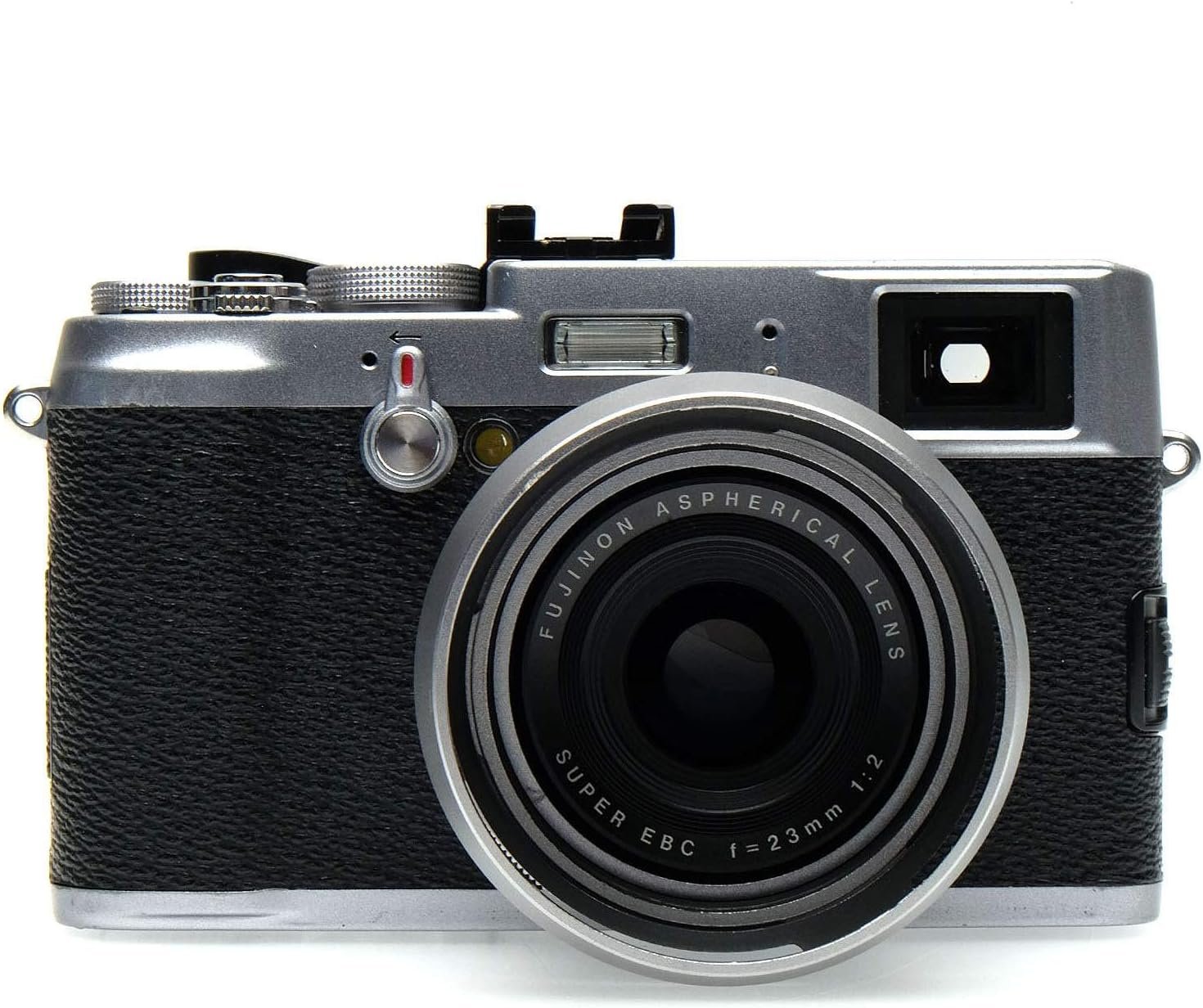
Fujifilm x100
The first proper camera I bought that has served me well over the years. I love the Fuji style and how compact and easy to use it is.

GoPro Camera + Protective Case
A must, especially for scuba diving adventures that is currently not part of my gear, while I order it again.

Apple Earpods
I love the classic Apple Earpods. I prefer having a cord, for times when I need one less thing to charge or worry about.

Apple Airpods
Another Apple favorite that is reliable, durable and sleek.

Laptop
My lifestyle requires that I work while on the road, so a laptop is a must. I am still traveling with my Lenovo Ideapad, that has lasted a good 7 years. My next update will be in the Apple family. I would also consider an iPad, keyboard and pencil for something more light weight and practical on short trips.

Anker Charger and Cables
Anker is worth the splurge every time, for the quality and durability of its products. I'm slowly shifting all my chargers and cables to Anker. They charge insanely fast and are super compact.
Bags, Beauty and the rest

BEIS - Weekender Convertible Bag
I splurged on this bag a few years ago and have been highly satisfied. It comes with a stylish laptop sleeve and a bottom compartment for shoes that can be removed and used as a packing cube on other trips. Durable design and lots of space.
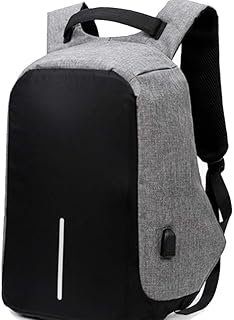
Anti Theft Backpack
I've used a version of this backpack for the past 4 years with no complaints. Anything minimalistic, with a laptop sleeve, few pocket compartments and a hidden zipper will do the job well. The budget option works for me.

Leather Fanny Pack (Belt Bag)
Fanny packs that look good are here to save the day. A must for me for week long trips with groups, where I need to keep a few items on me at all times, both for safety and convenience.
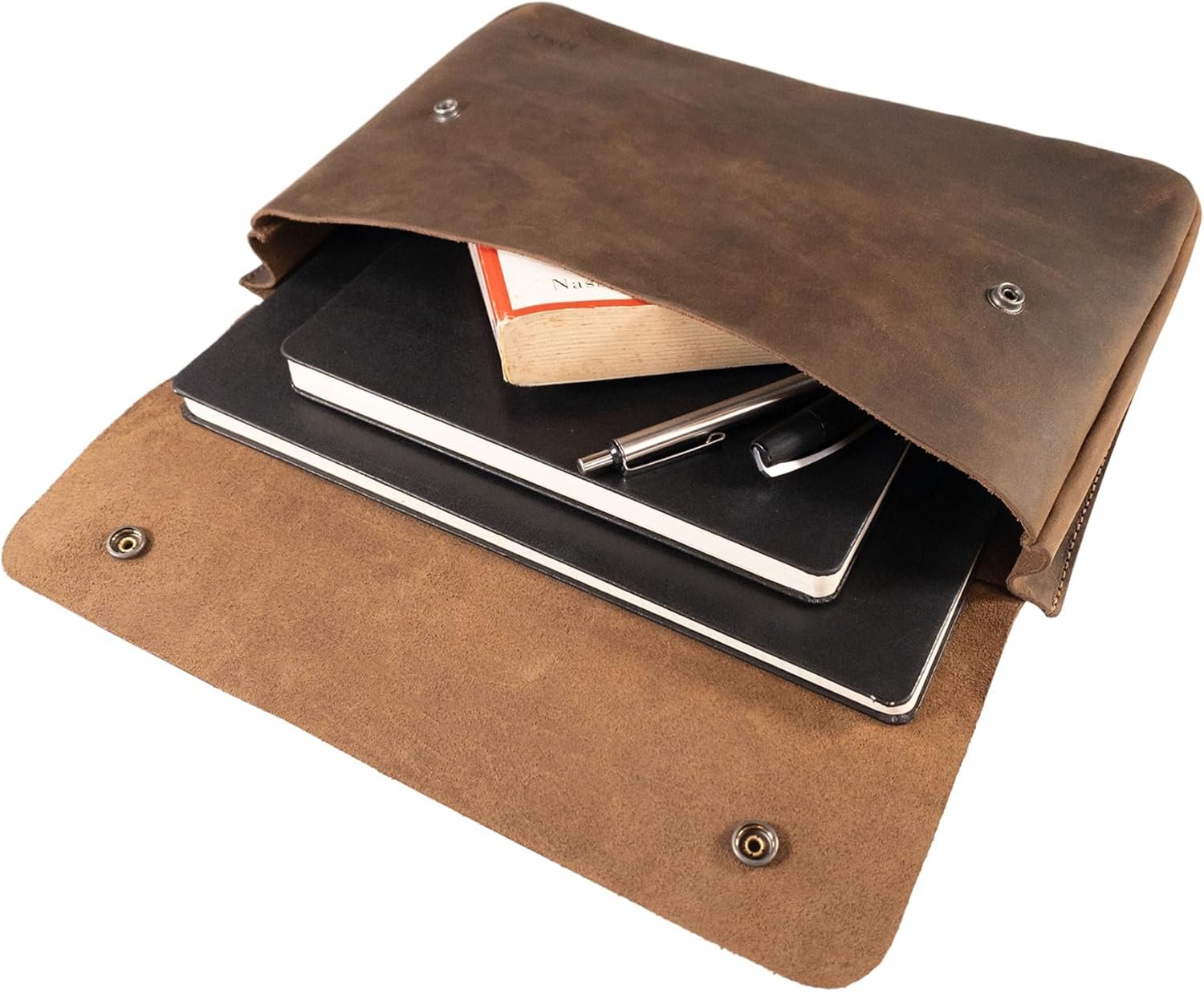
Leather Pouch - Document Folder
Work travel means work documents and receipts. I like to carry a separate pouch to store all essential paperwork during the trip. To organize further, I grab a bunch of simple paper envelopes that I can date and name.

Sea to Summit Quick Dry Travel Towel
These are small enough to throw in without worrying about space. They come in handy in various situations, not only when hiking or backpacking so I like to have one nearby. Sea to Summit is one of the best companies in the outdoor gear space and have reasonably priced items that are worth the investment.

Shark Flexstyle
Call it marketing or call it getting older but I fell for the Airwrap hype and am now a supporter. For trips where I need to look put together, this handy tool doubles as a hairdryer, and hairstyler and saves me the need to pack a straightening iron or curler. It also cools down much faster than other hair tools so you can do your hair at the last moment and still throw it in your bag to head to the airport.

PRO Packing Cubes
I bought a 5-pack from PRO packing cubes almost 8 years ago and they are still going strong to this day. The Amazon store for the company is no longer selling them so not sure what the status is now. I recommend the smaller sizes for packing loose items like socks and underwear, but they also double as cord organizers. The medium size is perfect for t-shirts and other clothing. I don't use the larger one's when I travel, but they work well for storage and organizing inside the house.

Fleece Jacket
A brethable and light fleece jacket will last for years and is a must layer if you enjoy outdoor activities, like hiking. I've only needed and bought two in my lifetime, one from Patagonia and one from the New Zealand company Macpac. Anything with merino wool will be pricey but worth it.

Sleeping Bag Liner
A silk sleeping bag liner is another small piece of gear worth adding to the list. They offer extra warmth on hiking trips, keep your sleeping bag cleaner, or create an extra layer of protection when sleeping in questionable hostel beds or shelters. This is another buy once and have-for-a-while piece of gear, so I would go with something from a reputable company like Sea to Summit.

Tote Cottom Bag
Chances are you have on of those lying around somewhere. It doubles as an everyday bag, a beach bag, a supermarket bag, or a place to throw in my laptop and go to a coffee shop for the day. Ιt also works well as a dirty laundry bag when you need to keep everything separate. They are affordable, eco-friendly, durable, stylish (choose one you like) and easy to clean.
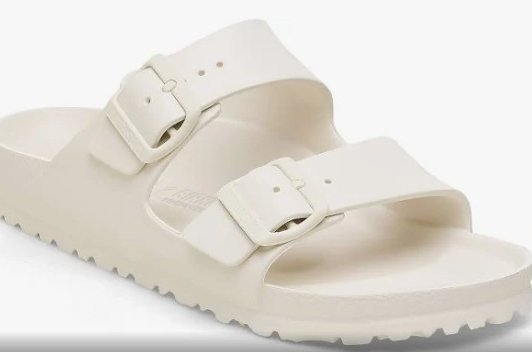
Birkenstock EVA Sandals
My New Zealand days have made me a walking barefoot everywhere fan. I also don't like flip flops. Ιf given the chance, I will sacrifice a pair of socks to throw away rather than wear flip flops. These sandals are my happy alternative that feel and look good.

Luca's Papaw Ointment
The one beauty item that I am particular about. Made with A-grade papaw from Australia, this Aussie made product has been a must have for everyone Down Under. Apart from being an excellent lip balm, it doubles as hand cream, eyebrow gel, and a quick fix for small cuts and burns. There are a lot of dupes that have similar names but don't compare to the original.
Packing tips for Digital Nomads and Travelers
- Focus on lightweight and compact items: Space and weight are your biggest enemies. If you must bring something heavy, consider doing so on smaller trips to “test” how much you still need it. The best example here is the debate between Kindle and books.
- Organize by function: I like to keep my work stuff in a different place than my other stuff. That way I can quickly pack a bag to head to work (aka a coffee spot). If you are a photographer or videographer, consider a separate bag for your camera gear.
- Use packing cubes: Small, medium or large (I prefer small), packing cubes make it easier to organize and sort through your stuff.
- Test what you need: Ask friends to borrow their equipment or try out the feel of a few things in-store rather than shopping online.
- Don’t bring what you can easily get: My main recommendation when it comes to buying gear and organizing your packing list for long-term travel is to focus on the things you can’t easily get on the road. For me, that includes electronics and comfort-first gear, like shoes. I personally like to know my shoes (whether hiking or simple everyday shoes) are good to go, and I won’t need to research shopping places while overseas. The same is true for big purchases like jackets. Socks, underwear, t-shirts, and toothpaste or shampoo? I can pick some of those up while traveling with little investment and check out how they work so I don’t fret if I don’t have them.
- Pack for the area: You don’t need to bring purification tablets if you are traveling to Sweden. But it makes a must-have in cities around India.
- Know yourself: Not to be too philosophical, but knowing what you like helps separate good advice from bad advice when it comes to recommendations and packing list online. Some travelers swear by khakis or quick dry clothes, but you know you will never wear them, and prefer jeans. For example, I hate travel pillows. Even if I often wished I had one to rest my head on, the extra bulk it requires makes this a no for me. So, it doesn’t matter how many times I see one recommended. I know I don’t need it. If everyone is recommending a Kindle but you rarely pick up a book, then don’t bring a Kindle. More importantly, consider the writer’s background, lifestyle, and country of origin. A lot of recommendations are given based on what we consider familiar, so search for people who have a similar starting point. (*this is the main reason I would avoid looking at gear lists from big magazines that tend to generalize).
Best Apps for Travellers
- XE: A quick and reliable way to check and convert between different currencies.
- Skyscanner: I always check Skyscanner for flights first, as I like to use the everywhere feature to plan.
- Hopper: I like to check Hopper next to check the trajectory of prices based on the route I like.
- Uber: I make sure to have Uber or Uber alternatives for countries I visit. Other options are Lyft, Waze or FREE NOW.
- Google Maps: This is a must on my phone whether I travel or not. I use Google Maps daily, whether I am checking places, creating lists for future travel destinations, or planning a new one. Tip: Make sure to download offline maps before your trip to the destinations you plan to see.
- Splitwise: If you are traveling with friends or your significant other, Splitwise makes it a breeze to handle finances. Truly a must. Let’s say you are traveling to Croatia with friends. You create a new “Croatia Trip” folder and add each user by sharing the link or adding their email. Then each person can add expenses as they pay, and input how it needs to be split. A super convenient way for everyone to pay their share, without using 3+ cards per transaction or splitting cash.
- Rome2Rio: Wandering how to get from point A to B the easiest way possible? This is where Rome2Rio comes in with suggestions for routes (train, plane, drive, ferry) as well as approximate time and cost.
- Google Translate: The most useful feature and reason enough to download the app rather than using the browser extension is the camera translation. Very useful when needing to translate signs or menus in languages you don’t understand.
- Booking.com: My preferred hotel and accommodation app.
- Airbnb & Airbnb Experiences: For some destinations, Airbnb makes sense. I always compare prices on Airbnb as well, especially when traveling to places where the Airbnb market is not oversaturated. Don’t overlook Airbnb Experiences either.
- Get Your Guide: This is another experience and activities app that has served me well. Even if you don’t book an activity there, it is good to know what is on offer in the area.
- Airline app: I make sure to download apps for the airlines I use the most during the trips. This way I can quickly get notifications on departure gates, and check-in information and also use it for boarding.
- Local transit apps: A lot of countries in Europe, have dedicated apps for trains, buses, and the like. Make sure to download them for better rates, and convenience when using public transport. I’ve listed a few below.
Best Apps for Europe
Sometimes you need specific apps for specific places. These apps cover different needs, as well as transit and public transport that will save you time, money and worrying about stops, routes, and ticket prices.
Many countries
- FREE NOW: A taxi app, available in Greece, France, Germany, Ireland, Italy, Poland, Spain and the United Kingdom.
- Uber Eats: This food delivery app is now available in Sweden, Spain, Switzerland, Poland, Portugal, Netherlands, Germany, Ireland, France and more. Sometimes you need to get delivery.
- WhatsApp: A no-brainer for those who live in Europe already. Most commonly used to catch up with friends and even for work.
- Bolt: Another taxi app that is more popular in some areas.
- Getir: A delivery app for groceries in various European countries.
- Meetup: Popular for checking out activities, finding new friends with similar interests, or joining a group. Great if you are staying in one place for a long time.
- Wolt: A food delivery app popular across Europe, especially Norway, Poland, Georgia, Croatia, Austria, Greece, and more.
- Rick Steves Audio Europe Travel Guides: Guidebooks on the go for many locations.
- Couchsurfing: A free accommodation app if you are on a budget and want to meet locals at the same time.
- ATM Fee Saver: This shows you ATMs with the lowest or no fees.
- City Mapper: A quick way to see all the different routes and compare public transit prices for your route. Popular in all big cities like London, and Paris.
- Komoot: Great for nature lovers who want to find new places of interest, to hike or bike.
- Sandemans New Europe: Find and book free guided tours in major locations across Europe. *This is a website and not an app.
- Hostelworld: If you are on a budget or simply prefer hostels, then Hostelworld is a must.
Scandinavia
- DOT: For transport tickets in the Copenhagen area.
- DSB: Largest train operator in Denmark. Can be used to download train tickets or other public transportation.
- Rejseplanen: For journely planning across Denmark.
- SJ: A must-have if you are taking the train across Sweden, Norway, Denmark, or other nearby countries.
- SL: This is another handy app if you are staying in Sweden and taking public transport around.
- Västtrafik: The Gothenburg version of SL for regional information.
- Midttrafik: A bus ticket app for Aarhus and Central Jutland.
- Skånetrafiken: Transport app for trains and buses in Skåne County, which includes Malmö, Lund, and Helsingborg.
- BVG: Tickets and information for Berlin.
- 9292: A transport app for Holland.
- Efood: The most popular food delivery app in Greece.
- DB Navigator: Tickets and trail transport across Germany.
- Cabify: Taxi app for Spain.
Best Travel Apps for New Zealand
New Zealand is the country I’ve spent the most time in after Greece. After 7 years and many road trips, including a one-month solo camping trip, these are the apps I would recommend.
- Camper Mate: If you are traveling to New Zealand, chances are you are hitting the road. Camper Mate is the most popular app for campervan-related information. From finding a campsite to a toilet to supermarkets, laundromats and sightseeing spots.
- WikiCamps: Another great app to find campgrounds, caravan parks, hostels, and general points of interest.
- Gapsy: All this driving means lots of fuel. To find the cheapest gas stations in your area, download Gaspy.
- Sandfly Map: Hiking in New Zealand doesn’t pose a lot of danger. Except for the weather and sandflies. This is a great app for hiking trips on the South Island that lets you know sandfly hotspots.
- TradeMe: The New Zealand version of Craiglist. Numerous categories to buy and sell stuff, including anything you might need if you hiking or backpacking around the country.
- StarChart: If you haven’t thought about stargazing as an activity before, camping under the New Zealand sky will make you. StarChart helps you identify what you are looking at.
- Met Service: Speaking of weather, it is good to have accurate weather updates, when you are in a country that is known to have four seasons in one day, no matter the season.
- Groupon: Who doesn’t like a deal? Find fun and affordable experiences to save a bit of money.
- Spark: Stay connected while on the road with a prepaid mobile pack or use the app to find WiFi hotspots around the country. Other options in the country are Vodafone and 2 Degrees. Compare plans!
- AT Park: Worry less about parking fines when visiting Auckland, with an app that lets you do it on your phone.
- Great Hikes: New Zealand has 10 Great Walks and conquering all of them is a bucket list item of mine. I’ve done 3/10 so far.
- Grab a Seat: An amazing site that not many include on their list. It allows you to find super deals for flights in New Zealand, Australia, and the Pacific islands. I often browsed the deals every few days to check what was available. It was how I scored a $1 flight to Queenstown from Auckland once!
- Air NZ: If you are spending even a bit of time in the country, look into creating an account with Air New Zealand. In addition to earning points through domestic flights you might take, you can collect some points at gas stations (Z and Caltex) or shopping at New World (supermarket) or LiquorLand (you guessed it, liquor store – or bottle store as Kiwis would say).
- Stuff.co.nz: Local news and entertaining stories from across the country. It will make you feel like you belong to the club when everybody else mentions the weird story of the day.
Also, check out:
Best Productivity Tools for Remote Work
- LastPass: I like to use a password manager to ensure that everything is well protected. In addition to storing all your passwords, it can include credit card details, licenses, and other important information. You can also use it to create unique passwords when signing up for new accounts.
- Apple Notes: Once upon a time, I used Evernote. Then I switched to the Apple universe, and Apple Notes was a no-brainer. It keeps track of information I see while on the road, to-do lists, journaling, and ideas. I like it for its clean interface.
- Calendly: The easiest way to schedule appointments and outsource the “what time are you available?” question. I use it to communicate with clients and track my availability.
- Google Calendar: Connects to all my stuff and organizes my day in case I forget something.
- Google Drive: I have a Google Drive subscription for all my photos and documents, which is in addition to transferring everything to an external hard drive.
- Google Mail: A familiarity-based option that I still use. I started with Gmail and will carry on with Gmail. In addition to being the easiest quick sign-up route for various things, it is where everything is stored.
- Zoom: I like Zoom for all video conferences and calls with clients.
- Read AI: This handy little tool generates AI summaries and transcripts after every meeting I have. You need to permit it to access your Zoom and then you are set. I check the insights it provides on speaking time, tone, and language use as well, to improve my video conferencing skills.
Being a Digital Nomad in Greece
Are you considering or have you applied to get a digital nomad visa for Greece? There are serious tax benefits for those considering a semi longer term move to Greece. But.. even if you are moving to the country for a few months while exploring the rest of Europe, this information will come in handy.
OUR RECOMMENDATIONS
Travel is Easier With...
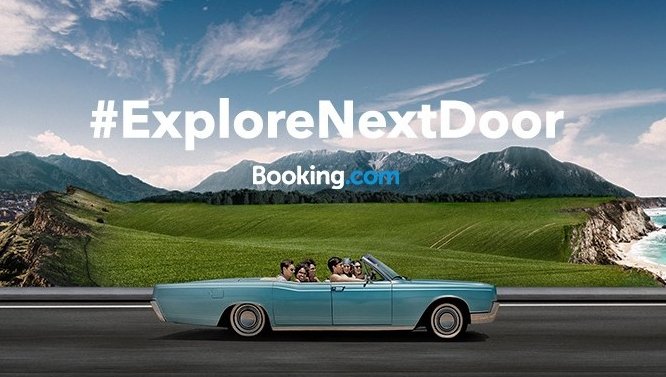
Find your dream hotel
The best place to find your next apartment, hotel, villa or accommodation option. Booking.com is the preferred way to book your ideal stay.
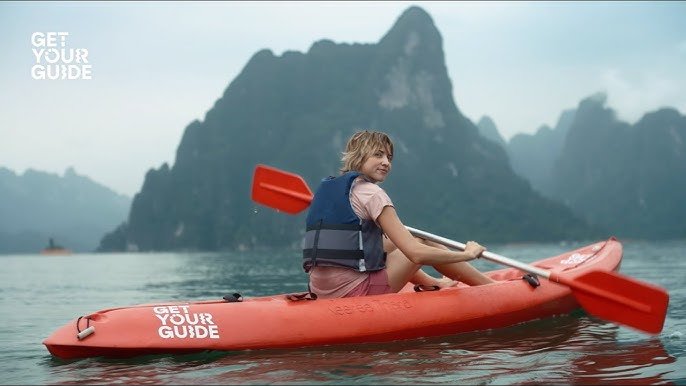
Find your next experience
Make the most of every opportunity to travel, learn, and explore. Find cultural experiences, sights, and attractions anywhere you are.
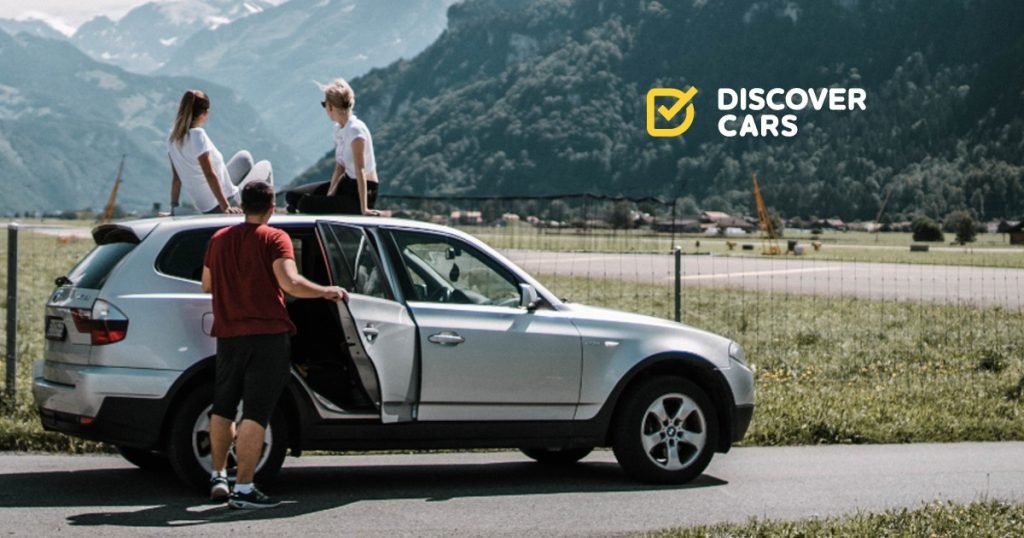
Find the perfect rental car
With no hidden fees, free cancellation and comparisons across all major car rental companies. Saves you time and money.
Digital Nomad Travel Resources
Disclaimer: Most of these tools make sense for digital nomads who run their own businesses. There is nothing I dislike more than generic filler content written by people that don’t live the lifestyle or haven’t actually tried the tools they recommend. What is below is the opposite of that.
If you are starting out, you don’t need everything. Slowly upgrade or add new tools as you go.
If the cost seems high at the moment, it pays to look at them as expenses that make it feasible to run an online business.
Essential Tools and Services for Digital Nomads
- Hostinger: Most digital nomads have (and need) a website. A simple one-page website helps with highlighting your portfolio and services and makes it easier to be found by clients or book projects. I use and recommend Hostinger for its affordable plans. You can use my referral link here for an additional 20% OFF your selected plan. I recommend their Business Web Hosting for those starting which is only $3.99/mo. This also means I use WordPress and not Wix or other website builders. Check out how to set up your WordPress website here.
- ConvertKit: Digital nomads are often creators at heart. They keep up with developments, find flexible work opportunities and continue to invest in their skills and education while on the go. ConvertKit is the logical next step for freelancers or those running a small business. It is both the easiest email marketing platform to learn how to use and set up and the most creator-friendly. If you don’t have a website yet, you can use ConvertKit to set up landing pages while you work on the website.
- Canva: From creating custom graphics to presentations, social media, or marketing materials, Canva changed the world with its easy-to-use drag-and-drop interface, which is perfect for those of us who are not designers and need a handy mobile and web-friendly tool. It will save you time on creating anything visual. There is a learning curve with everything including Canva, so make sure to spend some time exploring the learning resources for best outcome.
Productivity and Organization Tools for Digital Nomads
- Notion: When you work and travel, you need a workspace that is as flexible as you. A clean interface, intuitive design, endless capabilities, and options to scale based on needs and budget. That is why Notion is my go-to for planning, creating (contracts, outlines, material, etc), and communicating with clients while traveling. Equally recommended if you are a student and need 99% free task management and note-taking or journaling software. I used to use Evernote and the switch has been amazing!
- WeTransfer: Large files and even larger albums of photos. Two things that can cause headaches when working with slow hotel WiFi connections. The best file-sharing method.
- Adobe Creative Cloud: I’ve recently switched from a combination of Google Photos, iCloud Photos and hard drives, to storing my travel and business content on Adobe Creative Cloud. I am not a fan of Lightroom Classic, and much rather prefer to work on their cloud version. While there is an initial investment, I love that I can store, edit and have access to my most important photos from all devices, everywhere I go. I would go for the Lightroom Cloud version with 1 TB storage.
- ChatGPT Plus: Worth the subscription. After trying various AI tools related to writing (even before Chat GPT was born) this fits my work style and flow best.
Banking and Business Tools for Digital Nomads
- Expensify: The best way to keep track of expenses for myself and sometimes… clients. My accountant also likes the setup. I use the free plan and it serves me well for my needs. You can easily scan and categorize receipts and other expenses.
- Payoneer: In simple terms, Payoneer is a money transfer service, similar to Wize. There are some specific features that Payoneer offers though that are great if your business is registered in Europe and you have a lot of USA based clients.
Other tools such as Wise, Revolut and Revolut Business also help provide streamlined solutions with international business transactions and personal expenses.
Self-development tools for digital nomads
- Coursera Plus: Staying up to date is a must when working remotely or running your own business. I recommend and buy various courses, for upskilling and self-development. Coursera PLUS is an excellent option as it offers access to more than 7000+ courses! From Adobe Photoshop to Google Ads and Programming. At less than $60 a month, this is a steal, especially if you are a fast-paced learner and can do 2-3 courses per month.
- StartupBlink Coworking: One of the main things digital nomads look up when traveling is “where to work in “x”. That includes coffee shops and more often nowadays, coworking spaces. I love coworking spaces and think they are the superior option every time. In addition to providing a distraction-free space, they are great for networking, making friends, learning more about the local business culture, and more. Startup Blink features over 1000 coworking spaces around the world. Their other tools will also be of interest to digital nomads. Fun fact: I met Eli, the founder of StartupBlink, in a coworking space and worked together on a few projects. Lesson: Don’t skip the coworking spaces. You never know what opportunities await.
- 7 Minutes: The 7 Minute Workout App is just what it sounds like. An app with various 7-minute workouts that you can do from anywhere. Highly recommend it if you need new ideas to keep up with your fitness routine while traveling. Alternatively, I also highly recommend Asana Rebel. The annual plan is less than $40, and provides daily plans and recommendations tailored to your goals.
- Fiverr: Full disclaimer: I’m a top-rated Fiverr Seller with over 1,000+ 5* reviews on the platform and use Fiverr to promote my business services. As a tool for digital nomads and travellers, it serves many purposes both for you to find work and seek out the services of other people. Flexibility and innovation are at the core of what Fiverr strives to do, so check it out. You can get 10% off your first order on Fiverr by using my discount link here.
- Audible: Audible is the one subscription, in addition to purchasing a Kindle, that has kept me reading while on the road. As a multitasker, I love audiobooks for the freedom they allow me to read plus do something else. My favorite combinations are listening to audiobooks while cleaning or packing, and while going on walks around the neighborhood. They are also a far superior way to spend time when in transit, or a long flight.
AI Tools for Digital Nomads and Remote Workers
- Read AI: A meeting assistant that takes notes, transcribes and provides a summary of what happened and how it went.
- Krisp AI: Working from a coworking space? Want to reduce background noise and echo during your calls? Try Krisp.
- Jasper: Jasper, who used to be called Jarvis, is an AI writing assistant for all things that require words. It has some strong features and some not so strong. A lot of people use Chat GPT for this, but as a copywriter and marketer, Jasper is a better option (but do edit everything afterwards) if you can’t afford to hire someone directly.
- DALL·E 3: I’ve used DALL·E 3 for AI image generation. Versatility and high-quality images that can be used in many different ways.


